Blog: Photography
Lillian Bassman at The Wapping Project Bankside

Some work from the ionic fashion photographer, Lillian Bassman will be showing as part of 'Group Show' (a collection of work from all the artists represented since the award-winning gallery opened it's doors in October 2010) at The Wapping Project Bankside.
Lillian, now 93, is renowned for her stylised black and white fashion photography (above and below) that graced the pages of Harper's Bazaar during the 60's and early 70's.


During the 70's she left Harper's and fashion photography altogether, it was only when a stash of her images was found in the 90's that interest in her work grew and Lillian returned behind the camera after a 20 year break.
Her images are beautiful and feminine, yet strong and contrasty - a combination that works perfectly, they're exaclty the kind of images I love. The exhibition starts on the 17 August and runs until the 4 September. There isn't anything about it yet on their website, but I found more information here.
Images copyright Lillian Bassman.
Via Cool Hunting.
https%3A%2F%2Fwww.deliciousindustries.com%2Flillian-bassman-at-the-wapping-project-bankside
Delicious+Industries%3A+Lillian+Bassman+at+The+Wapping+Project+Bankside
Auto Type VI

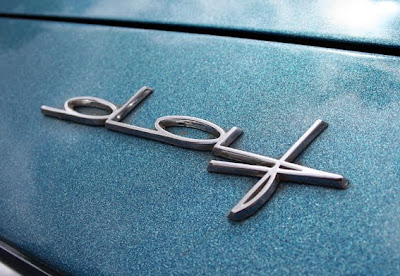
















I warned you the Auto Type posts would be more frequent now the show season has started! So here is #VI, a selection taken at the fabulous Goodwood Festival of Speed.
See Auto Type posts I-V and more Automobilia here.
https%3A%2F%2Fwww.deliciousindustries.com%2Fauto-type-vi
Delicious+Industries%3A+Auto+Type+VI
Carte-de-Visite

Whilst browsing the Ephemera Society website yesterday I discovered a great article about 'carte-de-visite' written by their secretary, Graham Hudson. I've collected carte-de-visite (example shown above) for years and always referred to them as photographer's cards - I had no idea they had an official name!
Graham has very kindly given his permission for me to post his article, so here it is. Make a cup of tea and get the biscuits, because it's much longer than my usual posts, but it's well worth a read...
Among collectors the term passes without comment - carte-de-visite. At antiques fairs and collectors’ markets they are ubiquitous, these little photographs, on the one side perhaps a fashionable young man in elegant topper or young woman in voluminous crinoline, or (less commonly) a small family group: on the other the elaborately presented studio address of the photographer. As records of costume they are invaluable, but as more personal records they are not without poignancy. In old shoe boxes amid the pots and pans of the boot fair, divested now of the family context that once brought them into being, we buy them at 50p a card. Who are these people whose eyes now touch ours across the years? We cannot know.
But why carte-de-visite, literally ‘visiting card’? In an article in Antiques Journal Lou McCulloch noted ‘The mounted card was approximately 2½ by 4 inches, slightly larger than a calling card, and, correspondingly received the French equivalent for a visiting card as its 'nom de plume’, McCulloch thus assuming the term adopted through simple association of scale. Yet if one puts a carte-de-visite photograph actually side by side with a range of nineteenth-century calling cards, then the difference in the simple look of them makes such a transference of nomenclature unlikely.
The great populariser of the carte-de-visite was André Disdéri, who in 1854 was granted patent for a means whereby several smaller images could be exposed on to a single 10 x 8in plate, thus reducing overall processing costs. It is not clear however on what Disdéri’s patent was based, for central to the process must have been the camera, and the camera Disdéri first used was one invented by Antoine Claudet, and shown by him at the Great Exhibition in 1851. Claudet’s instrument, the ‘multiplying camera-obscura’, had a plate holder "Which could be mechanically moved both across and down to allow different areas of the emulsion to be covered by successive exposures through the same lens, to represent on the same surface a number of different pictures, or the same in various aspects, the portraits of several persons, & c".
Later cameras adopted by carte-de-visite photographers included those with four independent lenses which, working with a simple shift mechanism, could double up to take the usual set of eight images on the one plate, and those of the London manufacturer Routledge, which worked on the Claudet principle but with which no fewer than twelve cartes could be taken.
The great period for the carte-de-visite was from 1859 to the later 1860s. It was in May 1859 that Napoleon III riding at the head of his troops, actually halted the French army en route to the war in Austria whilst he called at Disdéri’s Paris studio. The Emperor had shrewdly realised how effective as personal publicity such cheap portraits would be among the populace; and what the Emperor did the whole of fashionable Paris was quick to emulate. Disdéri made a fortune, opening studios in Toulon, Madrid and London. At the height of the craze, in 1866, it was estimated that between three and four hundred million of the small-scale photographs were sold in England alone. But after that year the fashion went into quick decline, though the carte-de-visite as the accepted format for run-of-the-mill family record was to last well into the century. Ergo those countless little sepias we find today in every fleamarket.
They are worth collecting, and not least for the sake of their often richly decorated backs, photographers in effect turning their very products into tradesman’s cards for the businesses that produced them. Most frequently the backs were printed by lithography, exploiting the freedom and intricacy in design afforded by the process, and rich in invention though they were it is not uncommon for the collector to come across the same basic imagery employed on the photo backs of quite different establishments. The designs were created of course not by the photographers but by commercial printers, who had access to ready-drawn imagery in the form of stock litho transfers in the same way that letterpress printers had the facility of stock blocks, and it is these stock motifs that one finds recurring.
Though photography was in very essence part and parcel of the science and technology of the period - collodion, silver nitrate, anastigmatic lenses et al - the theme of photo-back imagery is essentially that of ‘Art’. There is scarce a chemical in sight. The underlying art theme of A & G Taylor’s photo-back illustrated here, with its flowers, birds, abstract patterning and one little putto actually creating a picture by drawing is not untypical, and that the imagery in this case does include an incidental camera is sufficiently uncommon to put this example into a distinct sub-category known to collectors as a ‘camera-back’. Rare indeed is a design such as that of Lambert Partington of Southport showing the whole paraphernalia - camera, dark slide, developing dish, retouching brushes and even painted studio backcloth-virtually the complete kit.
But still, ‘visiting card’? Could these little photographs ever actually have been so used? I had this question in mind for a long time. Helmut and Alison Gernsheim in their History of Photography quote Ernest Lacan, editor of La Lumiére writing in the issue of 28 October 1854 regarding two Parisian amateurs E Delessert and Count Aguado who, it appears had at least the idea of photographic calling cards: "For formal calls, the visitor should be represented wearing gloves, the head bowed in greeting, as social etiquette requires; in bad weather he should be shown with an umbrella under his arm; for farewell visits, a portrait should be furnished in travelling costume." The Gernsheims take this at face value, without further comment, but there is a hint of tongue-in-cheek they overlook. Shown with an umbrella in bad weather indeed!

However, in 1857, photographer T. Bullock of Macclesfield was actually advertising address cards ‘with a splendid photograph on the reverse side’ (have any surviving examples been located, one wonders?) and a chance find at an Ephemera Society bazaar was the carte of Charles Tomlinson, of New Britain, Connecticut (above), where, with its combination of tasteful engraver’s black-letter and discreet script, the back has all the appearance of a gentleman’s calling card rather than the up-front display of the photographer.

The clincher though must be the Punch cartoon of 1862 (above), only recently noticed. There is your young man about town, young Tomkins, card case in hand, attempting to leave his undoubted carte-de-visite. The joke is that the little photograph, scarce glanced at by the flunkey, is taken for a mere tradesman’s card and Tomkins peremptorily dismissed. Evidently the fashion of the carte as card was uncommon even then.
Thus a little light is thrown on a forgotten and ephemeral fashion. How briefly must those cartes have manifested on the card trays of those who made and received calls, to have left so little impression on the historic record and in the collections of the ephemerist.
As for Disdéri, reputed in 1861 to have been the richest photographer in the world, money ran through his fingers. With the decline in the carte-de-visite craze his fortunes too went into decline and he ended his career as a beach photographer in Nice, dying in the poor house there in 1890.
© Graham Hudson 2003. All Rights reserved.
https%3A%2F%2Fwww.deliciousindustries.com%2Fcarte-de-visite
Delicious+Industries%3A+Carte-de-Visite
Auto Type V
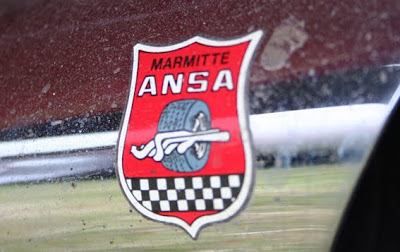
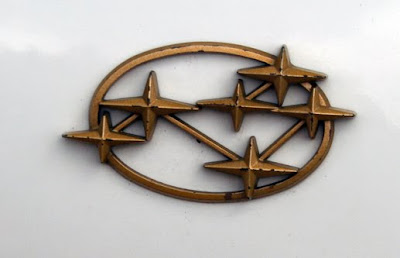

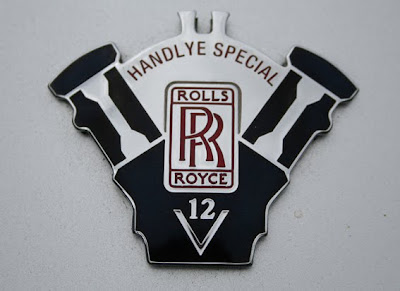

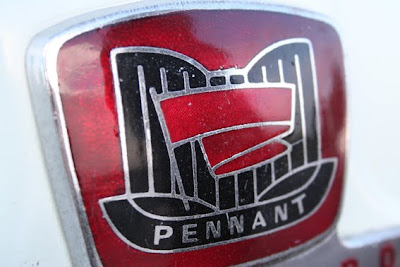
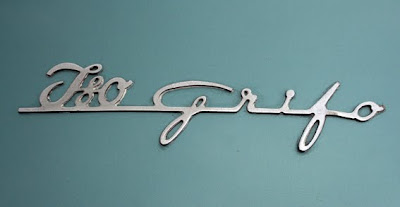


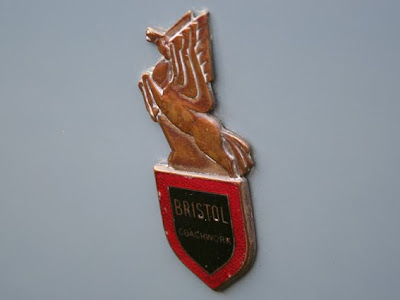

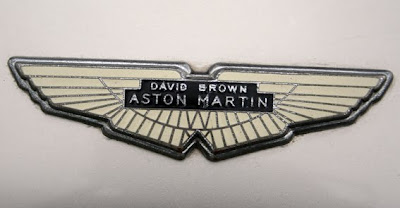

I thought it was about time we saw some more fabulous Auto type, so here we have Auto Type V. These are the most recent additions to my collection, but as the show season really starts to kick in I'm sure I'll have more to share very soon!
If you missed our previous Auto Type posts you can see them here, here, here and here or check out our Flickr set. If race numbers are more your thing you'll definitely like these too.
https%3A%2F%2Fwww.deliciousindustries.com%2Fauto-type-v
Delicious+Industries%3A+Auto+Type+V
From the reference box # 76
I love the typography on the backs of these cards, they're always so decorative and detailed. Interestingly (although maybe not to everyone) 3 of the above cards (top 3) are from the same studio, W. Gothard in Wakefield so you can see the progression of the design. I don't know for sure, but I'm guessing the more elaborate design (top) is the earlier card and the simpler, more minimal design (third down) is the later card.
I'll upload these asap to my vintage photographic card Flickr set.
https%3A%2F%2Fwww.deliciousindustries.com%2Ffrom-the-reference-box-76
Delicious+Industries%3A+From+the+reference+box+%23+76
Jumpology!
A Life photographer with over 101 cover shots to his name, a regular contributor to LOOK and the Saturday Evening Post, Halsman was often commissioned to shoot the rich, famous and influential people of the 50's. During this time he had the wonderful idea of Jump! - once the official shoots ended he would ask the stars (no matter how famous or important) to jump. The resulting images (above) are brilliant and show the celebs in such a natural, relaxed way.
"Marilyn Monroe, Brigitte Bardot, Salvador Dali, Weegee, Jack Dempsey and even the Duke and Duchess of Windsor agreed to take a leap of faith. In that era of live television along with the popularity of the big glossy magazines, one’s image was not nearly as protected and shaped by handlers as it is today. There was a feeling of innocence, a desire for spontaneity, and Halsman, with his playful and charming personality, knew he had to get almost everyone to oblige his demand: JUMP!"
Halsman called the series, 'Jumpology!' and for the first time they are being exhibited at the Laurence Miller Gallery in New York (exhibition runs until 28 May 2010). For those that can't make it over to NY there was a book of the images (below) published in 1986 which is still available here and here.
Images copyright of the artist, taken from Laurence Miller Gallery.
Via The Photography Post and Notcot.
https%3A%2F%2Fwww.deliciousindustries.com%2Fjumpology
Delicious+Industries%3A+Jumpology%21
Martin Parr: retrospective of photobooks


Martin Parr's images are guaranteed to bring a smile to your face - they're witty, colourful and superbly captured, so make sure you get down to the Rocket Gallery in fashionable Shoreditch before the 20th Feb and experience them first hand.
The Retrospective of photobooks will be Parr's 8th exhibition at the gallery and sounds fantastic, "Sixty photographic books by Martin Parr, dating from 1974 to 2009, will each be exhibited together with a group of iconic editioned photographs". Quick now, there's only 1 week left!
Images copyright Rocket Gallery.
https%3A%2F%2Fwww.deliciousindustries.com%2Fmartin-parr-retrospective-of-photobooks
Delicious+Industries%3A+Martin+Parr%3A+retrospective+of+photobooks
Fernand Fonssagrives Exhibition

Studio couch, 1956 (light and shadow) © Fernand Fonssagrives
Silver gelatin print
I can't wait to see Fernand Fonssagrives at the Michael Hoppen Gallery. Fonssagrives was an iconic fashion photographer whose images have graced the pages of fashion magazines throughout the world.
His first wife and muse, ballerina turned model (and some say, the first super model) Lisa Fonssagrives, "helped to define the natural, effortless beauty that has become the mainstay of fashion photography as we now know it". His photos of Lisa embraced the mood of the 30's and 40's - the strikingly graphic silhouettes with a clean modernist feel and the dynamic, poses of her leaping through the air capturing the care-free attitude.

Taxi Cab New York 1945 © Estate of Fernand Fonssagrives courtesy Michael Hoppen Gallery
Silver gelatin print

The Coat Hanger c.1940 © Estate of Fernand Fonssagrives courtesy Michael Hoppen Gallery
Silver gelatin print

Elan 1935 © Estate of Fernand Fonssagrives courtesy Michael Hoppen Gallery
Silver gelatin print
Fonssagrives died in 2003. Despite at one time being the highest paid photographer in the world and being a key figure in the New York School of avant-garde photography his work remained quite anonymous and rarely seen.
However from the 14 January to 6 March his wonderful images will be on show at the Michael Hoppen Gallery, London. I for one can't wait!
https%3A%2F%2Fwww.deliciousindustries.com%2Ffernand-fonssagrives-exhibition
Delicious+Industries%3A+Fernand+Fonssagrives+Exhibition
Neon Boneyard

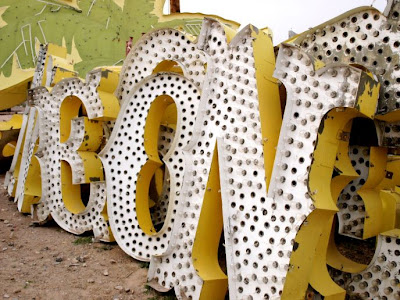



Neon Boneyard is a great collection of images by photographer Pam Sattler over on Icon-ology of the old, decaying signs that once lit up the strip and casinos in Vegas. I'm sure I've posted about the neon graveyard in the past, but I can't find it!
Pam's photos show the shabby chic beauty of the signs and their faded glory really well - they look amazing. See the full collection here.
Images copyright Pam Sattler.
Via Notcot.
https%3A%2F%2Fwww.deliciousindustries.com%2Fneon-boneyard
Delicious+Industries%3A+Neon+Boneyard
Great signage

I saw this over on On Aime Se Promener and love it - a wonderfully simple, well executed idea for an Opticians (Dunscombe Opticians, Bristol, UK).
Image copyright On Aime Se Promener.
Via Inspire me, now!
https%3A%2F%2Fwww.deliciousindustries.com%2Fgreat-signage
Delicious+Industries%3A+Great+signage
From the reference box #62

#62 - Vintage 90th Birthday photograph. I love vintage photography and collect old photos of cats and Volkswagens, but whilst searching through stacks of photos in antique stores and boot sales I often come across images with a story, either visible in the image or written on the reverse - a date, a shopping list, a message - something that gives a little peak into that persons life and I love that even more than the images themselves.
This is one of my favourite non vw or cat related ones found amongst a batch I bought at a bootsale. On the back it reads, in really shaky handwriting:
"This was taken on my 90th birthday June 1/43 with the bake Ida made for me with 90 candles on it which I had to blow out - M.L.Rose"
Such a lovely note, and how big is that cake - I hope she had lots of friends to share it with!
There's more vintage photography based items in the reference box here, here and here.
https%3A%2F%2Fwww.deliciousindustries.com%2Ffrom-the-reference-box-62
Delicious+Industries%3A+From+the+reference+box+%2362
Auto Type IV
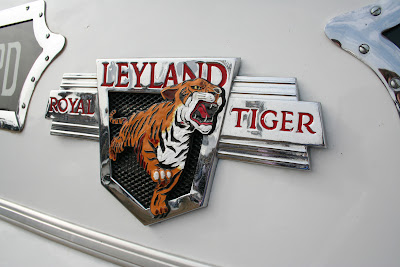


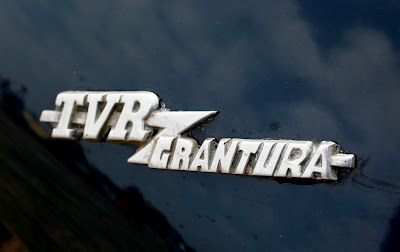
More lovely car emblems and graphics to add to my collection. The top one is particularly significant for me as Leyland is my home town - a town built on the success of vehicles like this old bus. Shame they don't make bus logos (or in fact buses) like this anymore!
If Auto type is your thing, check out previous posts here, here and here or take a look at my dedicated Flickr group.
https%3A%2F%2Fwww.deliciousindustries.com%2Fauto-type-iv
Delicious+Industries%3A+Auto+Type+IV
The Graphic Eye

Finally we got our hands on the great new Rotovision book, The Graphic Eye by Stefan G. Bucher which showcases, 'Photographs by International graphic designers'.
Big thanks to Stefan and his team for including our images (above) in the book it's an honor to have them published along side the work of great designers like Ed Fella.



Huge congrats also to our friends at Sell! Sell! who had three of their great Polaroids published in this book too (below).

https%3A%2F%2Fwww.deliciousindustries.com%2Fthe-graphic-eye
Delicious+Industries%3A+The+Graphic+Eye
Signs of the TImes - Dennis Hopper photography

Ed Ruscha, 1964. Images copyright Dennis Hopper, courtesy Tony Shafrazi Gallery, NY.

James Rosenquist, 1964. Images copyright Dennis Hopper, courtesy Tony Shafrazi Gallery, NY.

Robert Fraser, Tijuana, 1965. Images copyright Dennis Hopper, courtesy Tony Shafrazi Gallery, NY.

Biker couple, 1961. Images copyright Dennis Hopper, courtesy Tony Shafrazi Gallery, NY.
These great snap shots of the 60’s are as seen through the eyes of Hollywood legend, Dennis Hopper. This Easy Rider, unbeknown to most, has been taking photographs since the 50’s. His own fame gave him easy access to America's elite and he photographed many iconic faces, from fellow actors, Dean Martin & John Wayne, to artists Andy Warhol, David Hockney & Roy Lichtenstein and musicians Tina & Ike Turner.
“His photos of a relaxed, shirtless Paul Newman and the cowboy-playing John Wayne and Dean Martin on the set of 'The Sons of Katie Elder' are visual gems”. Paul Laster for The Daily Beast.
Signs of the Times is an exhibition showcasing 110 of Hopper’s amazing images (1961-67), a selection of his new paintings and screenings of 40 of his films and TV shows. It runs from 24 October at the Tony Shafrazi Gallery, New York and will be accompanied by a 544 page limited edition book by Taschen of the same name.
Images copyright Dennis Hopper from The Daily Beast, courtesy Tony Shafrazi Gallery, NY.
Via Notcot.
https%3A%2F%2Fwww.deliciousindustries.com%2Fsigns-of-the-times-dennis-hopper-photography
Delicious+Industries%3A+Signs+of+the+TImes+-+Dennis+Hopper+photography
Polaroid Limited Edition

Urban Outfitters have collaborated with The Impossible Project to, 'bring instant photography back to life'. The special edition Polaroid camera and 10 pack of type 779 instant film are available instore and online, but in limited numbers so don't wait too long if you want one. The 10 pack of instant film is also sold separately for those who already have a Polaroid camera.
Images copyright Urban Outfitters.
https%3A%2F%2Fwww.deliciousindustries.com%2Fpolaroid-limited-edition
Delicious+Industries%3A+Polaroid+Limited+Edition
Welcome
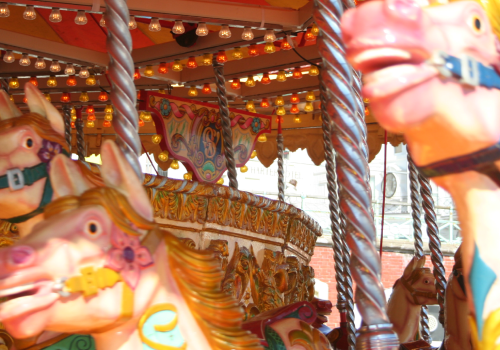
Welcome to the Delicious Industries blog. We're an independent design studio based in Brighton, UK and this is our scrapbook packed full of design, illustration, photography & typography inspiration. Check out our work here.
Links
DELICIOUS FRIENDS
DELICIOUS FAVOURITES
- 50 Watts
- Acejet 170
- Grain Edit
- It's Nice That
- National Geographic Found
- Notcot
- Pretty Clever
- Retronaut
- So Much Pileup
- We Love Typography
- Another Mag


















